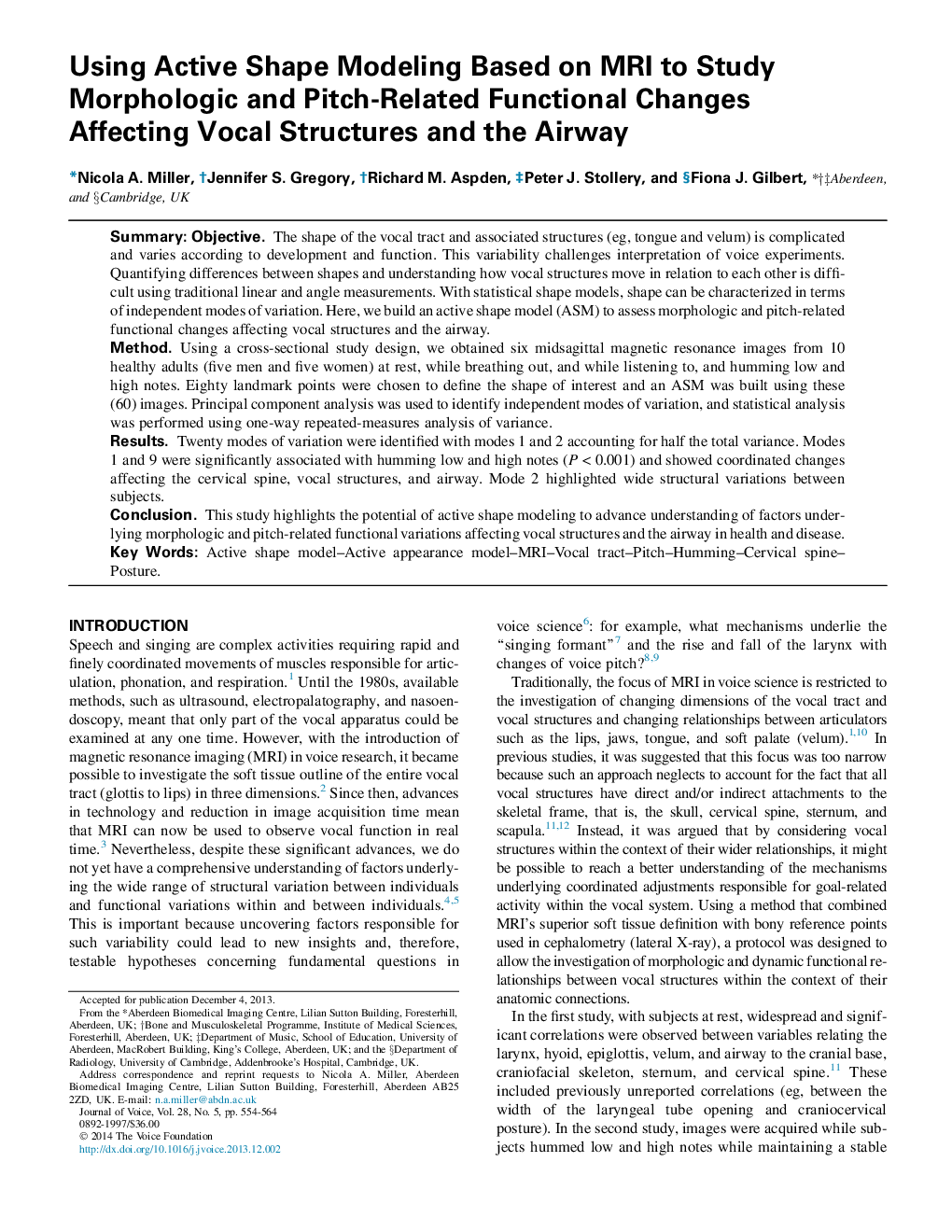| Article ID | Journal | Published Year | Pages | File Type |
|---|---|---|---|---|
| 1101680 | Journal of Voice | 2014 | 11 Pages |
SummaryObjectiveThe shape of the vocal tract and associated structures (eg, tongue and velum) is complicated and varies according to development and function. This variability challenges interpretation of voice experiments. Quantifying differences between shapes and understanding how vocal structures move in relation to each other is difficult using traditional linear and angle measurements. With statistical shape models, shape can be characterized in terms of independent modes of variation. Here, we build an active shape model (ASM) to assess morphologic and pitch-related functional changes affecting vocal structures and the airway.MethodUsing a cross-sectional study design, we obtained six midsagittal magnetic resonance images from 10 healthy adults (five men and five women) at rest, while breathing out, and while listening to, and humming low and high notes. Eighty landmark points were chosen to define the shape of interest and an ASM was built using these (60) images. Principal component analysis was used to identify independent modes of variation, and statistical analysis was performed using one-way repeated-measures analysis of variance.ResultsTwenty modes of variation were identified with modes 1 and 2 accounting for half the total variance. Modes 1 and 9 were significantly associated with humming low and high notes (P < 0.001) and showed coordinated changes affecting the cervical spine, vocal structures, and airway. Mode 2 highlighted wide structural variations between subjects.ConclusionThis study highlights the potential of active shape modeling to advance understanding of factors underlying morphologic and pitch-related functional variations affecting vocal structures and the airway in health and disease.
